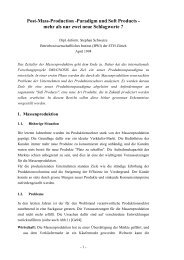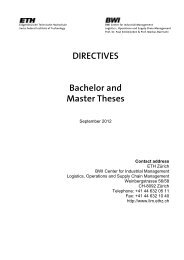The China Venture
The China Venture
The China Venture
You also want an ePaper? Increase the reach of your titles
YUMPU automatically turns print PDFs into web optimized ePapers that Google loves.
anks were established in <strong>China</strong>. <strong>China</strong>’s commercial and financial capital Shanghai alone<br />
hosts 38 foreign banks and 119 representative offices, in 1997 the number of branches even<br />
raised to 70. This figure is increasing rapidly. 37<br />
However, the international banks can only do little more than arrange capital injection<br />
certification and continue lucrative trade finance because of numerous restrictions for foreign<br />
banks in <strong>China</strong>. In addition, opening an account with a foreign bank adds extra steps and<br />
expenses. Differences in banking services shows some differences between Chinese and<br />
international banks in financing investment projects in <strong>China</strong>. Until the end of 1996, no<br />
foreign bank could offer many day-to-day services to foreign companies or individuals in<br />
local currency. In January 1997, it was announced that nine foreign banks had been granted<br />
licences to undertake business in RMB. Among these group were the Citibank, Hong Kong &<br />
Shanghai Banking Corporation, Bank of Tokyo-Mitsubishi, Industrial Bank of Japan, Dai-Ichi<br />
Kangyo Bank, Sanwa Bank, Standard Chartered Bank and International Bank of Paris. Formal<br />
approval to actually transact business in RMB would be forthcoming when the conditions of<br />
the licence had been fulfilled to the satisfaction of the PBOC. According to PBOCs<br />
regulations, the foreign bank must have achieved profit in the last three years and engaged in<br />
medium- to long-term capital financing in <strong>China</strong>. Such a licence is only granted to those<br />
banks located in the Pudong New Area - the new financial district of Shanghai. (<strong>The</strong>y were<br />
also given the choice to maintain a sub-branch in the older Puxi district of Shanghai, but RMB<br />
business can only be handled in Pudong.) <strong>The</strong>ir total RMB loans are not allowed to exceed<br />
35% of their foreign currency liabilities. Compared with the total loans outstanding in <strong>China</strong>,<br />
this is only a very small amount. <strong>The</strong> banks each have to inject foreign currency capital<br />
(equivalent to no less than RMB 30 million) and convert it into RMB as working capital to<br />
run their RMB business. 38<br />
36 Wegner, 1998, pp. 23.<br />
37 Asian Wall Street Journal, April 1, 1996, p. 4; Jin Rong Shi Bao, March 5, 1996, p. 2.<br />
38 Klug, 1997, p. 7 and Wegner, 1998, p. 24.<br />
28






